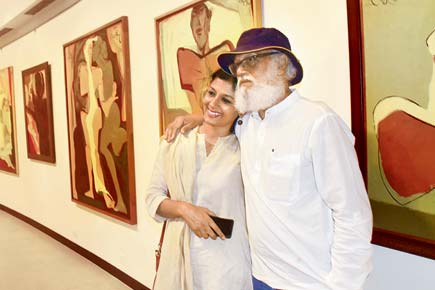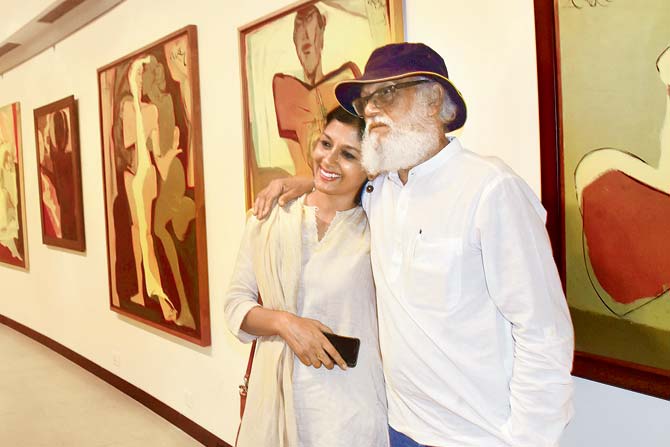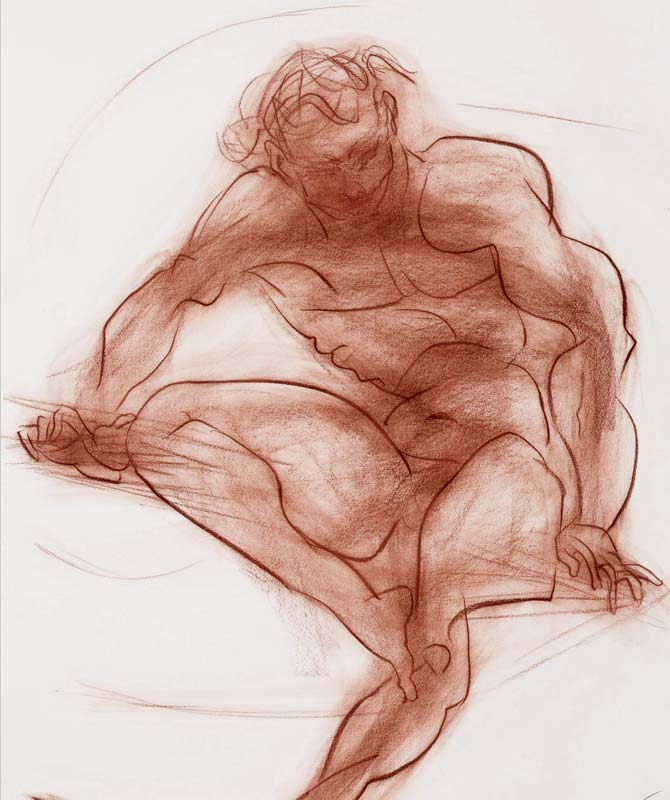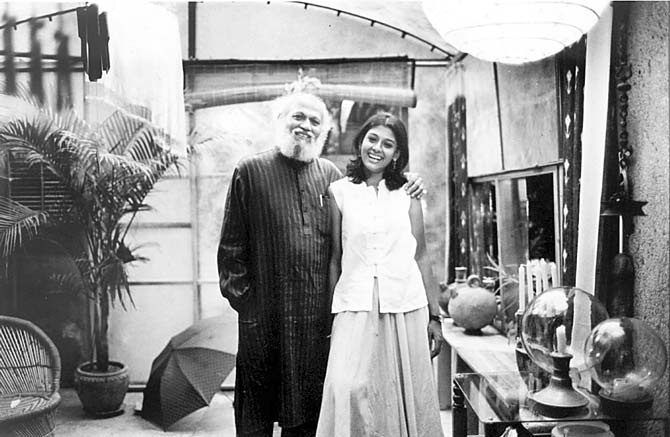A rare interview -- no, conversation, as Jatin Das puts it -- with him and daughter Nandita reveals an equal relationship

Last week, a familiar face returned to the city. On Tuesday, Jatin Das, a multifaceted artist and Padma Bhushan awardee, brought his 69th solo exhibition to Jehangir Art Gallery with an opening that was studded with some of the most eminent personalities in the arts that Mumbai has nurtured. It has been nearly 50 years since Das left Mumbai, where he studied at the Sir JJ School of Art in the early 1960s and also practiced for a few years. After the birth of his eldest child, Nandita, the family shifted base to New Delhi. But Das is no stranger to Mumbai and its capricious nature.
ADVERTISEMENT

Artist Jatin Das and daughter, actor-filmmaker Nandita, at Jehangir Art Gallery. Pic/ Atul Kamble
On Friday morning, we catch the artist at Jehangir Art Gallery. Figures in Motion, which will run till October 16, has 83 works that he has not shown to Mumbai audiences previously. Presented by Gallery Art and Soul, the exhibition is notable for Das' mastery of the line and the dynamic energy of his figures.
We are here to meet Das and Nandita, an actor-filmmaker well-known for her association with arthouse cinema. Fierce about his privacy, Das declares that he rarely gives interviews with his daughter. Meeting Das is like encountering Socrates — he answers questions with questions, and dismisses those he considers 'empty'. He has a distaste for terms such as 'inspiration' and 'creativity'. He believes in conversations rather than interviews.
Very soon, a flute-seller, the kind we see in touristy Colaba, saunters in. Das says, "I have made friends with him," and asks him to play a tune. The musician walks around the gallery, which is filled with Das' figures drawn from dance movements and temple sculptures. We observe that the flautist is the perfect accompaniment to the paintings. Das sighs. "You are not getting my point.

Tandav, conté on paper, by Jatin Das
It is the simple act of bringing a flute-seller into the gallery. I did the same thing yesterday, and students from JJ bought a few from him. Why do we want to make something more out of it?" says Das.
Smiling fondly at her father, Nandita says, "We have gotten used to intellectualising everything, on giving everything a name or a form. It takes us away from feeling the experience."
Her words resonate well with the paintings around us. Das gives only a sense of the figure, leaving much to the viewer to fill in.
"When does a figure become a nude? When you strip it off its clothes. But mine were never clothed in the first place! They are simply bare bodies," says Das. "His figures are not bound by time or space. There is something universal about them," says the daughter.
Of all the people, it would seem that Nandita understands her Baba best. She tempers his caustic observations, and gently persuades him, as a proud daughter would, to share his achievements.
Art is life
Working out of a tiny 6x5 ft studio in the now-shuttered Bhulabhai Memorial Institute, Das says that those were the times when art collectors, such as Henning Holck-Larsen, would drop by. "Leading scientists and businessmen would take breaks from their workday to attend exhibition openings. They didn't just buy works but also visited the studio often to interact with the artist," he says. Being raised by a father who didn't hanker after the art market, says Nandita, has had its effects on her. "As an actor, I have always been sort of outside the industry, on the fringes. I may have subconsciously imbibed these values," says the filmmaker, who is preparing for the release of her directorial venture, Manto.

Das and daughter Nandita, shot in 2005, outside his apartment in New Delhi
What's more, her mother, Varsha Das, who served as director at the National Book Trust, and later the National Gandhi Museum, was the one who was away at work, while her father was at home, painting and packing lunchboxes with equal gusto. "My brother [Siddhartha] and I grew up with this role reversal!" she says.
The scintillating company that her father kept naturally played a huge part in Nandita's upbringing. However, it was less the jargon surrounding art and more the mindfulness that her father brought into her life that has made the difference, she thinks. As Das rues the fact that Nandita is yet to indulge in some pottery on a daily basis as he asked her to, Nandita says, "We didn't
discuss art, we discussed life. My father made us observe things around us -- the lines on leaves, the child playing on the street... it was about living a holistic life. Talking about art as a 'career' wasn't even part of our vocabulary," she says.
 Subscribe today by clicking the link and stay updated with the latest news!" Click here!
Subscribe today by clicking the link and stay updated with the latest news!" Click here!






